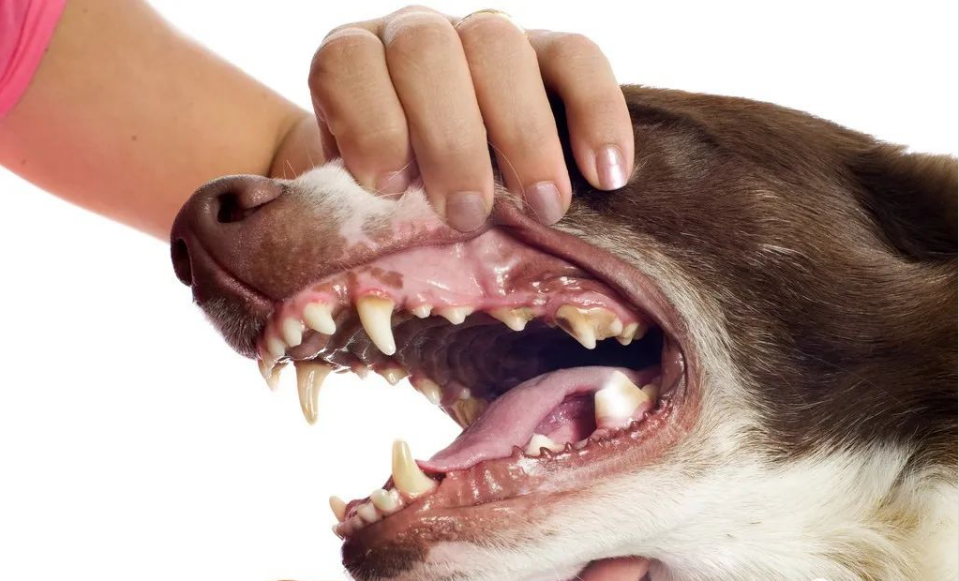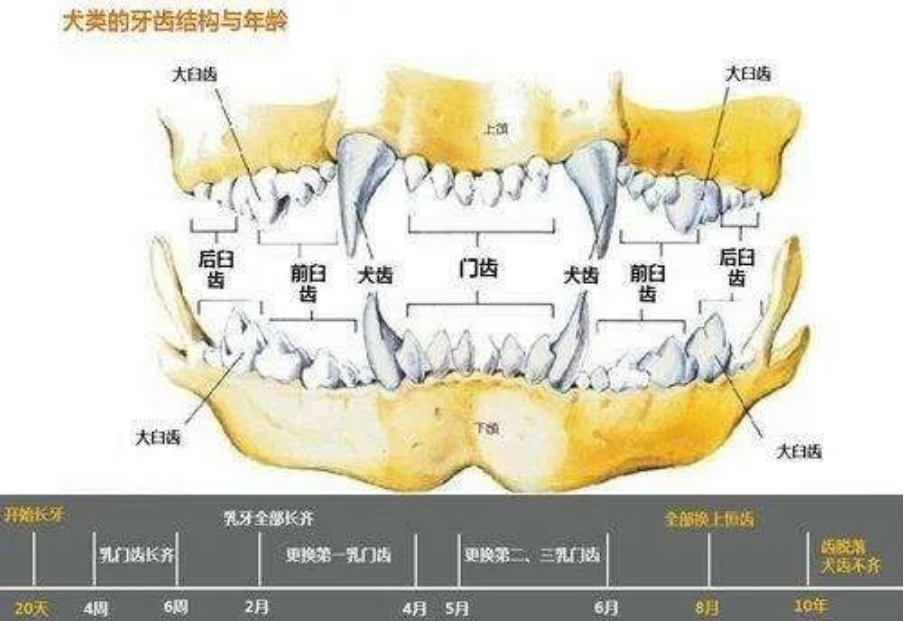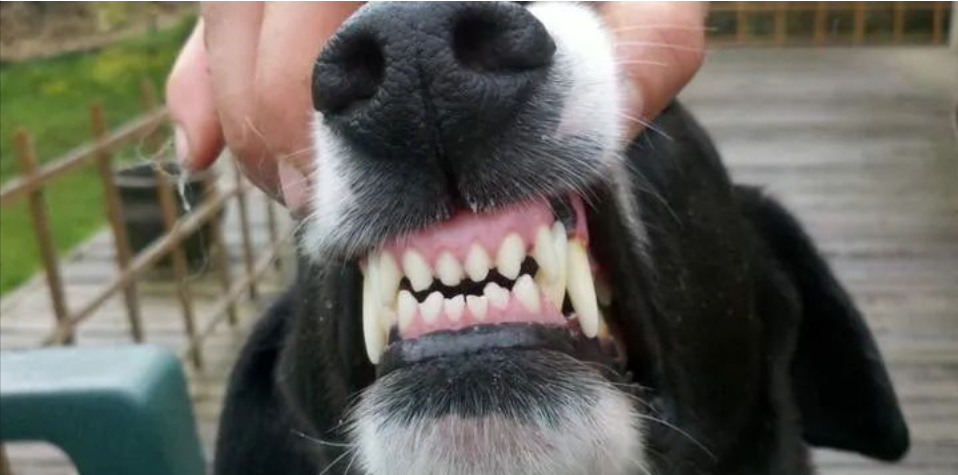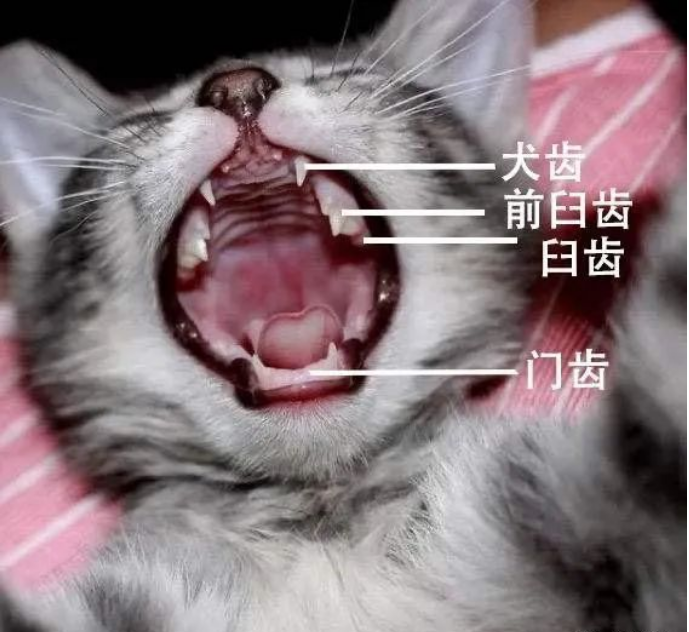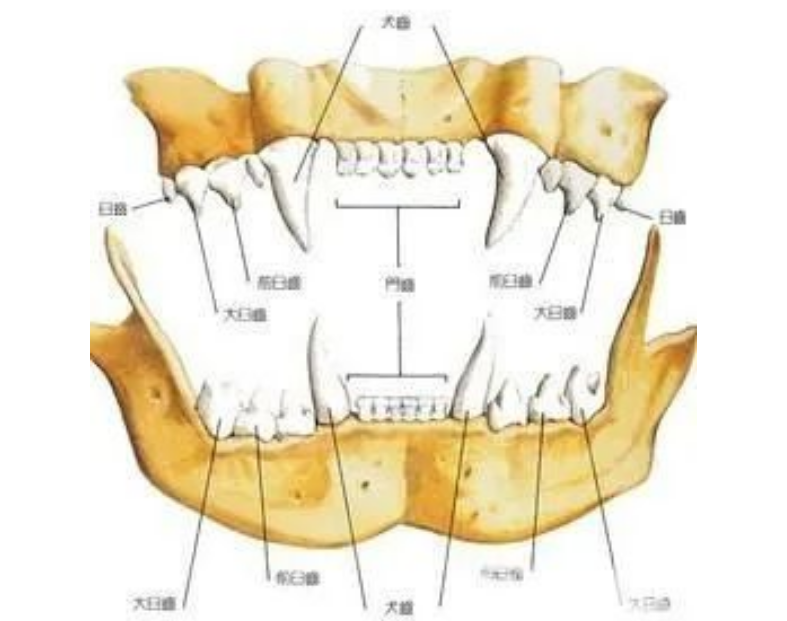Many friends’ cats and dogs are not raised from childhood, so I would like to know how old they are? Is it eating food for kittens and puppies? Or eat adult dog and cat food? Even if you buy a pet from childhood, you will want to know how old the pet is. Is it 2 months or 3 months? In hospitals, we usually determine the age of pets through teeth.
There is a significant difference between teeth due to the different food and feeding habits, the different use of tooth grinding toys and snacks, so generally speaking, the teeth will be relatively accurate for puppies and kittens, while the deviation may be relatively large for adult dogs. Of course, the so-called deviation is also moderate. A 5-year-old dog always eats bones, and the tooth wear is the same as that of a 10-year-old dog. But you can’t meet a 10-year-old dog with the same teeth as a 5-year-old dog. Before, I met a pet owner who brought a golden hair called 17 years old. That’s a great thing. It needs to determine the age and physical condition before it can be treated. It is estimated to be 7 years old when you open your mouth to see the teeth. Is it wrong to remember the age of his grandparents?
Of course, when you are young, you can also know many diseases of pets by observing their teeth, such as whether they lack calcium and have double rows of teeth. So it is important to learn how to look at the development of teeth and judge their age and health.
02
The dog begins to grow deciduous teeth 19-20 days after birth; At 4-5 weeks old, the first and second breast incisors are the same length (incisors); When 5-6 weeks old, the third incisor is even; For 8-week-old puppies, the deciduous incisors are fully grown, and the deciduous teeth are white and thin and sharp;
During 2-4 months of birth, the puppies began to gradually replace the deciduous teeth, and the first incisor began to fall off and grow new incisors; The second and third incisors and canines are replaced at the age of 5-6 months; At the age of 8 months to 12 months, all molars are replaced with permanent teeth (permanent teeth). The permanent teeth are white and bright, and the incisors have sharp protrusions. If there is yellow, it means there is tartar;
When the dog is 1.5-2 years old, the large peak of the first mandibular incisor (incisor) is worn out, and is flush with the small peak, which is called peak wear out; At the age of 2.5, the cusp of the second mandibular incisor (middle tooth) was worn out; At the age of 3.5, the peak of the maxillary incisor was worn out; At the age of 4.5, the cusp of the middle maxillary tooth was worn out; This is the end of the dog’s youth. The tooth changes during this period are less affected by the age factor than the food factor, so they gradually become inaccurate.
Since the dog was 5 years old, the third incisor of the lower forehead and the canine cusp were slightly worn (not flattened), and the first and second incisors were rectangular; At the age of 6, the cusp of the third maxillary incisor was slightly worn, and the canine teeth were blunt and round; At the age of 7, the mandibular incisors of large dogs were worn to the root, and the grinding surface was vertical oval; At the age of 8, the mandibular incisors of large dogs are worn and inclined forward; At the age of 10, the wear surface of the mandibular second incisor and the maxillary incisor was longitudinal ellipse; Large dogs generally live for 10-12 years, and rarely have teeth falling off, which is usually serious wear;
When a small dog is 16 years old, it has a long life span, or it is a standard old dog. The incisors fall off, the canine teeth are incomplete, and the most common one is uneven yellow teeth; At the age of 20, the canine teeth fell off, and there were almost no teeth in the mouth.
03
Compared with dogs often gnawing hard things to grind their teeth, which makes it difficult to judge age due to tooth wear. Cats’ teeth grow regularly and can almost be used as the best standard to judge age.
The canine teeth of cats are relatively long, strong and sharp. The canine teeth have a tooth root and a tooth tip. When the oral cavity is closed, the upper canine teeth are located at the posterolateral side of the lower canine teeth. There is a gap behind the canine tooth. The first premolar is relatively small, the second premolar is relatively large, and the third premolar is the largest. The upper and lower premolars are all composed of four tooth tips. The middle tooth tip is large, sharp, and has the effect of tearing flesh, so it is also called a split tooth.
The cat grows its first breast incisor 2-3 weeks after birth; The second and third incisors and canines are formed around 3-4;
Cats grow first and second incisors to replace breast incisors at about 3.5-4 months old; At the age of 4-4.5 months, the third incisor grows to replace the breast incisor; Canine teeth grow in about 5 months to replace baby canine teeth;
The cat grows premolar teeth about 2 months; The second and third deciduous premolars grow up at 4-6 months, and are gradually replaced with permanent premolars; The first posterior molar grows at 4-5 months. The main tooth replacement age of cats is about 4-6 months. During this period, they may lose appetite due to toothache.
After the cat is 1 year old, its lower incisors begin to wear; After the age of 7, the cat’s canine teeth began to age gradually, and the mandibular incisors became rounded; After the age of 10, the front teeth of the cat’s upper jaw may fall off, so you can adjust your diet according to the changes of the te
Post time: Mar-10-2023


